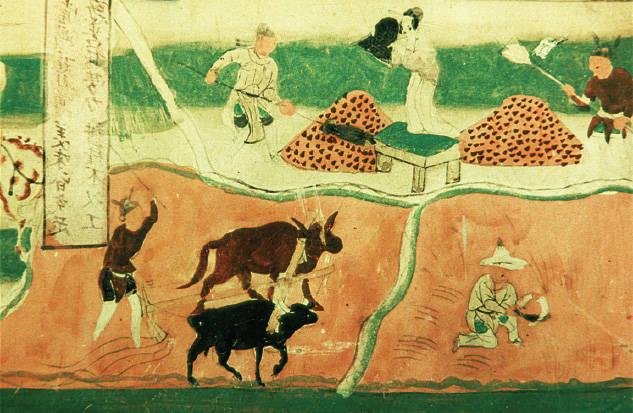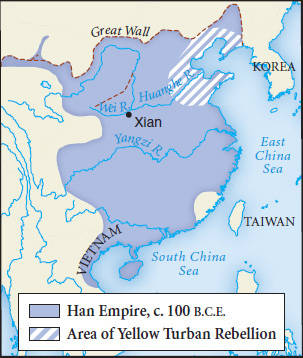Peasants

Throughout the long course of China’s civilization, the vast majority of its population consisted of peasants, living in small households representing two or three generations. Some owned enough land to support their families and perhaps even sell something on the local market. Many others could barely survive. Nature, the state, and landlords combined to make the life of most peasants extremely vulnerable. Famines, floods, droughts, hail, and pests could wreak havoc without warning. State authorities required the payment of taxes, demanded about a month’s labor every year on various public projects, and conscripted young men for military service. During the Han dynasty, growing numbers of impoverished and desperate peasants had to sell out to large landlords and work as tenants or sharecroppers on their estates, where rents could run as high as one-half to two-thirds of the crop. Other peasants fled, taking to a life of begging or joining gangs of bandits in remote areas.
An eighth-century C.E. Chinese poem by Li Shen reflects poignantly on the enduring hardships of peasant life:
The cob of corn in springtime sown
In autumn yields a hundredfold.
No fields are seen that fallow lie:
And yet of hunger peasants die.
As at noontide they hoe their crops,
Sweat on the grain to earth down drops.
How many tears, how many a groan,
Change
Question
What class conflicts disrupted Chinese society?
[Answer Question]
Each morsel on thy dish did mould!5

Such conditions provoked periodic peasant rebellions, which have punctuated Chinese history for over 2,000 years. Toward the end of the second century C.E., wandering bands of peasants began to join together as floods along the Yellow River and resulting epidemics compounded the misery of landlessness and poverty. What emerged was a massive peasant uprising known as the Yellow Turban Rebellion because of the yellow scarves the peasants wore around their heads. That movement, which swelled to about 360,000 armed followers by 184 C.E., found leaders, organization, and a unifying ideology in a popular form of Daoism. Featuring supernatural healings, collective trances, and public confessions of sin, the Yellow Turban movement looked forward to the “Great Peace”—a golden age of equality, social harmony, and common ownership of property. Although the rebellion was suppressed by the military forces of the Han dynasty, the Yellow Turban and other peasant upheavals devastated the economy, weakened the state, and contributed to the overthrow of the dynasty a few decades later. Repeatedly in Chinese history, such peasant movements, often expressed in religious terms, registered the sharp class antagonisms of Chinese society and led to the collapse of more than one ruling dynasty.